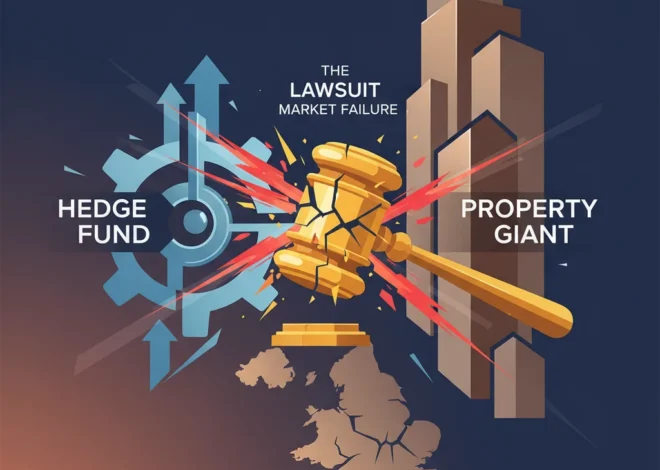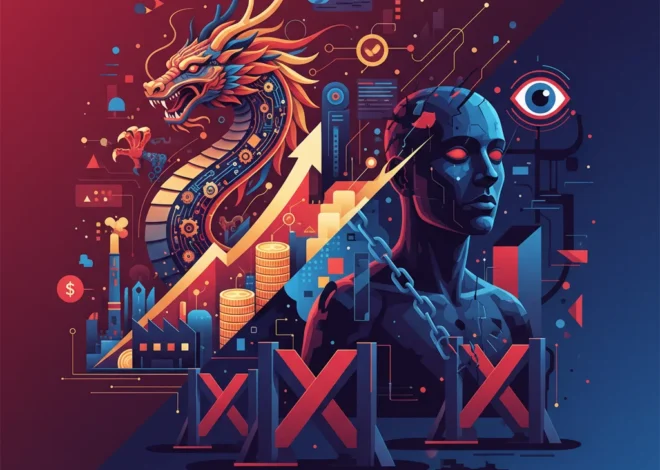
Beyond the AI Hype: Why the Broader Market is Flashing Major Warning Signs
For months, the stock market has been a tale of one city. The explosive rise of Artificial Intelligence, led by titans like NVIDIA, has dominated headlines and portfolios, creating a narrative of unstoppable technological progress. But as the summer heat intensifies, a distinct chill is creeping into the financial markets. The relentless, AI-focused rally is showing signs of fatigue, and a host of other sectors—from cryptocurrency to traditional banking—are sounding alarms. This is no longer just a tech story; it’s a comprehensive market reckoning that investors and business leaders cannot afford to ignore.
The narrowness of the recent market rally has been a point of concern for seasoned analysts for some time. When a handful of mega-cap tech stocks are responsible for the lion’s share of index gains, it creates a fragile foundation. Now, we are seeing the first significant cracks appear in that foundation. The conversation is shifting from “how high can AI go?” to “what other risks have we been ignoring?” This pivot marks a crucial moment in the current economic cycle, demanding a closer look at the interconnected pressures shaping the future of finance and investing.
The AI Engine Begins to Sputter
The AI boom has been nothing short of spectacular. Companies at the forefront of this revolution saw their valuations soar to astronomical heights, pulling the entire stock market along for the ride. However, recent trading sessions have introduced a new, more cautious tone. We’re witnessing profit-taking in key AI players, and the Nasdaq has shown signs of volatility that suggest investor conviction is wavering. While no one is predicting the demise of AI as a transformative technology, the market is beginning to question the sustainability of its parabolic stock price ascent.
This isn’t a sign that the AI revolution is over; rather, it’s a classic market response to a sector that has become overheated. As the original analysis from Investing.com highlights, the focus is broadening. Investors are realizing that even the most powerful technological trends are not immune to macroeconomic realities like persistent inflation and the “higher for longer” interest rate environment. The cooling of AI enthusiasm is not happening in a vacuum; it’s the catalyst forcing market participants to re-evaluate risk across the entire financial landscape.
Crypto’s Chill: A Barometer for Risk Appetite
Often considered the canary in the coal mine for speculative sentiment, the cryptocurrency market is sending its own clear signals. Bitcoin, after flirting with all-time highs, has struggled to maintain momentum, and prominent crypto-related equities like Coinbase have experienced significant slumps. The decline in the digital asset space is more than just a sector-specific issue; it’s a powerful indicator of a broader “risk-off” mood sweeping through the world of investing.
When investors feel confident about the economic outlook, they are more willing to allocate capital to higher-risk, higher-reward assets like cryptocurrencies and fintech startups. Conversely, when uncertainty looms, they retreat to the perceived safety of cash, bonds, and blue-chip dividend stocks. The current weakness in the blockchain and crypto ecosystem suggests that big money is becoming more defensive. This sentiment shift is critical, as it often precedes wider corrections in the stock market and a general tightening of financial conditions. The struggles of this corner of financial technology serve as a potent warning that the era of easy money and boundless speculation is firmly behind us.
The Persistent Strain on the Banking Sector
While tech and crypto have captured the public’s imagination, the traditional banking sector continues to grapple with deep-seated challenges. The issues that sparked the regional banking crisis in 2023 have not disappeared; they have merely simmered beneath the surface. Banks, particularly smaller and regional institutions, remain under significant pressure from a variety of economic forces.
The rapid rise in interest rates has left many banks holding long-term bonds that are now worth significantly less than their purchase price, creating massive unrealized losses on their balance sheets. Furthermore, their exposure to a cooling commercial real estate market presents a slow-moving but substantial threat. As vacancy rates rise and property values fall, the risk of loan defaults increases, putting further strain on bank capital. According to recent reports, the number of “problem banks” on the FDIC’s confidential list has been steadily increasing, a clear sign of systemic stress.
To better understand the multifaceted pressures on the banking industry, consider the key headwinds they currently face:
| Pressure Point | Description and Impact |
|---|---|
| Unrealized Bond Losses | Banks hold portfolios of government bonds. As the Fed raised interest rates, the market value of older, lower-yield bonds plummeted, creating paper losses that constrain liquidity and capital. |
| Commercial Real Estate (CRE) Exposure | Regional banks are heavily invested in CRE loans. With the rise of remote work and higher borrowing costs, the CRE market is weakening, increasing the risk of widespread loan defaults. |
| Deposit Competition | High-yield savings accounts and money market funds now offer attractive returns, forcing banks to either pay more for deposits (squeezing margins) or risk customers moving their cash elsewhere. |
| Regulatory Scrutiny | Following the 2023 failures, regulators are increasing capital requirements and stress testing, which can limit a bank’s ability to lend and generate profits. |
The health of the banking sector is fundamental to the overall economy. Banks provide the credit that fuels business expansion and consumer spending. When they are under strain, they lend less, which can slow economic growth and create a challenging environment for businesses of all sizes.
A British Broadcasting Behemoth? Unpacking the Landmark Sky-ITV Takeover Talks
Connecting the Dots: It’s All About the Macro Economy
It is tempting to view the AI stock correction, the crypto slump, and the banking sector’s woes as separate, isolated stories. However, the expert perspective is that they are deeply interconnected—three distinct symptoms of the same underlying condition: a broad re-evaluation of risk in a challenging macroeconomic environment.
For the past year, the AI narrative was powerful enough to make investors overlook other economic red flags. Now, that narrative is no longer sufficient. The market is being forced to confront the realities of an economy still grappling with the aftershocks of inflation. The prospect of the Federal Reserve keeping interest rates higher for longer than anticipated is a wet blanket on all forms of investing. Higher rates make it more expensive for companies to borrow, slow down economic activity, and make safer assets like Treasury bonds more attractive relative to stocks.
This is the common thread:
- For AI Stocks: High interest rates make investors less willing to pay premium prices for future growth promises.
- For Cryptocurrency: In a high-rate world, holding a non-yielding asset like Bitcoin becomes less attractive compared to earning a risk-free 5% on T-bills (source).
- For Banks: High rates are the direct cause of their balance sheet problems and exacerbate the risks in their loan portfolios.
The transition away from an AI-only focus is a sign of market maturity. It indicates that a more holistic and cautious approach to trading and investing is taking hold, one that is grounded in the fundamentals of economics rather than a single, speculative trend.
Beyond the Golden Arches: McDonald's UK Scandal and the New Financial Reality of Corporate Culture
Conclusion: Navigating the New Market Reality
The financial landscape is undergoing a significant character shift. The era of a narrowly focused, AI-driven bull run is giving way to a more complex and discerning market environment. The simultaneous pressures on technology, fintech, and traditional banking are not a coincidence; they are a collective signal that the broader economy is asserting its influence once again. For investors, finance professionals, and business leaders, this moment calls for vigilance and strategic adaptation. Blindly chasing the hottest trend is no longer a viable strategy. Instead, the focus must return to the timeless principles of sound investing: diversification, fundamental analysis, and a clear-eyed understanding of macroeconomic risk. The market is speaking, and its message is clear: look beyond the hype and pay attention to the whole picture.


